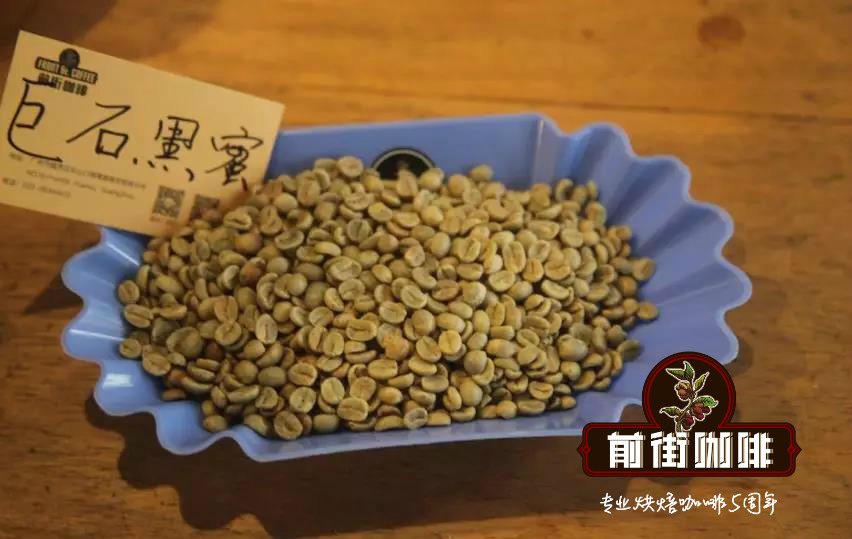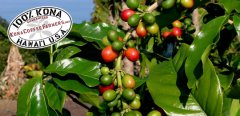Costa Rican Carnett Manor musician Coffee beans Beethoven Mozart Bach Chopin Coffee beans
Costa Rica Canet Musician Series Mozart
Mozart, Carnett Manor, Costa Rica
Producing area: Tarazhu
Variety: Kaddura, Kaduai
Altitude: 1950
Treatment: raisin honey treatment
Costa Rica, located in the Central American isthmus, is controlled by Pacific and Atlantic currents and sea breezes at the same time, and there are many towering volcanoes up to 2000 meters above sea level. Coffee berries are able to grow slowly in the fertile volcanic ash soil and cool environment at high altitude, giving birth to coffee beans with complete and rich flavor.
Costa Rica can be divided into two seasons a year. The dry season is from December to April, the coffee harvest is from December to April, and the wet (rainy) season is from May to November. In recent years, micro-treatment plants have been established, and since the water consumption is only 5% of that of traditional washing plants, and does not require huge sinks and exposure fields, the investment required is relatively small. The "honey-treated coffee" with low acidity, high complexity and strong sweet flavor has become the target of competition in the coffee industry in recent years.
Coffee was grown in Costa Rica two hundred years ago, first on the slopes of the Poas and Barva volcanoes, now known as the Central Valley. At present, Costa Rica has eight main producing areas: West Valley in the western valley, Central Valley in the central valley, Tarrazu in Tarazu, Tres Rios in Sanhe, Orosi in Europe, Brunca in Brenka, Duli Alba Turrialba and Guanacaste in Guanacaster.
Tarrazu is one of the main coffee producers here. Tarazhu production area also has a certain history of coffee production, has been favored and recognized by the British royal family, and even praised in the Pope's speech.
| Canet Carnett Manor
Carnett Manor is located at the highest altitude in the Tarazu producing area and is the densest fruit-growing area in Costa Rica. Carnett Manor is mainly to grow passion fruit, the amount of coffee is very rare, only a specific area to grow coffee, take special care. All coffee cherries are picked by hand, only ripe red cherries are harvested, but there is a screening process before processing after harvest to pick beans that are not ripe or too ripe.
Treatment method
| | treatment of raisin honey |
Retain 100% pectin and zero water treatment. It increases the difficulty of the honey processing method, which requires strict control of time. On the day of harvesting coffee cherries, pour the harvested coffee fruit into a big trough, and the ripe and full fruit will sink to the bottom of the water; the underdeveloped or overripe fruit will surface, and these floating beans need to be removed. Put the screened coffee fruit on an elevated bed to dry for at least three days, then remove the cherry peel and retain the pectin before drying. At this stage, climate factors are the key to the success of honey treatment.
Keep turning these coffee cherries during the drying process to make them dry evenly, but control the turning frequency and dry slowly to ensure that the coffee is fermented, but not so slowly that it is overfermented.
Raw bean analysis
| | Kaddura Caturra, Kaduai Catuai |
Kaddura and Kaduai are more common in American beans, especially in Central America.
Kaddura
Kaddura is a variety of bourbon, was found in Brazil in 1937, production capacity and disease resistance are better than bourbon, and the tree is shorter, easy to harvest, adaptable, does not need shade trees, direct exposure to the sun can also be full of vitality, commonly known as exposed coffee (Sun Coffee). Kaddura is suitable for planting in the high altitude area from 700m to 1700 m, with strong adaptability to altitude, but the higher the altitude, the better the flavor, and the production capacity is relatively reduced, which is the fate of fine beans.
Kaduai
Kaduai is also an Arabica hybrid breed, which is a hybrid breed of Mundo Novo Mondonovo (New World) and Caturra Kaddura. It has a good ability to resist natural disasters, especially wind and rain. It inherits the advantages of Kaddura's low stature and changes Mondonwood's shortcomings; another advantage is that it is solid and not easy to fall off in case of strong wind, which makes up for the weakness of Arabica fruit.

Important Notice :
前街咖啡 FrontStreet Coffee has moved to new addredd:
FrontStreet Coffee Address: 315,Donghua East Road,GuangZhou
Tel:020 38364473
- Prev

Costa Rican Stonehenge Manor Black Honey treatment of Coffee beans how to make Coffee beans sweet
Costa Rica Stonehenge country: Costa Rica Manor: Stonehenge Manor Grade: SHB treatment: black honey treatment altitude: 1700-1800m varieties: Kaddura and Kaduai are located in Costa Rica in the Central American Isthmus, while being regulated by Pacific and Atlantic currents and sea breeze, the country has many towering volcanoes up to 2000 meters above sea level, and coffee berries can be found in fertile
- Next

Hawaii Kona, one of the most beautiful coffee beans in the world, and extract V60 siphon Philharmonic pressure KONO
Professional Coffee knowledge Exchange more information about coffee beans Please follow the Coffee Workshop (official Wechat account cafe_style). Today's introduction is from Kona, Hawaii, which has a good reputation as one of the most beautiful coffee beans in the world. The popularity of KONA,BIG ISLAND Hawaiian coffee mainly comes from this producing area, which is different from other producing areas of Hawaii.
Related
- Detailed explanation of Jadeite planting Land in Panamanian Jadeite Manor introduction to the grading system of Jadeite competitive bidding, Red bid, Green bid and Rose Summer
- Story of Coffee planting in Brenka region of Costa Rica Stonehenge Manor anaerobic heavy honey treatment of flavor mouth
- What's on the barrel of Blue Mountain Coffee beans?
- Can American coffee also pull flowers? How to use hot American style to pull out a good-looking pattern?
- Can you make a cold extract with coffee beans? What is the right proportion for cold-extracted coffee formula?
- Indonesian PWN Gold Mandrine Coffee Origin Features Flavor How to Chong? Mandolin coffee is American.
- A brief introduction to the flavor characteristics of Brazilian yellow bourbon coffee beans
- What is the effect of different water quality on the flavor of cold-extracted coffee? What kind of water is best for brewing coffee?
- Why do you think of Rose Summer whenever you mention Panamanian coffee?
- Introduction to the characteristics of authentic blue mountain coffee bean producing areas? What is the CIB Coffee Authority in Jamaica?

